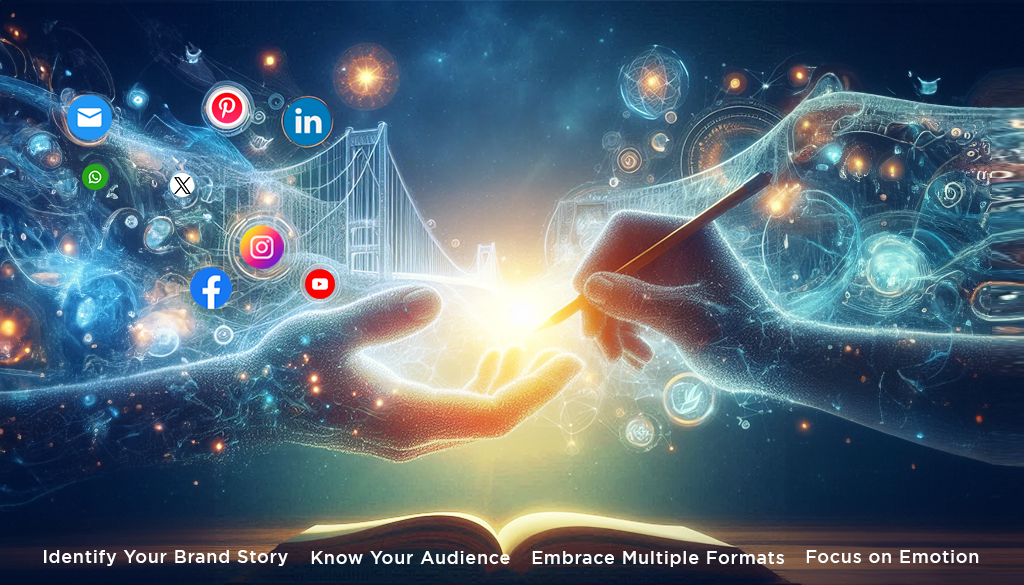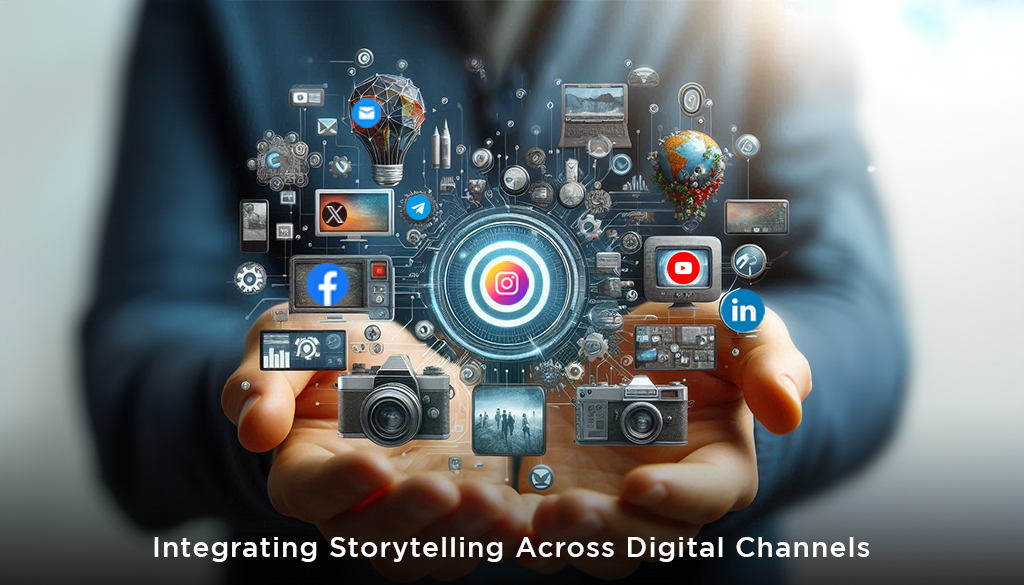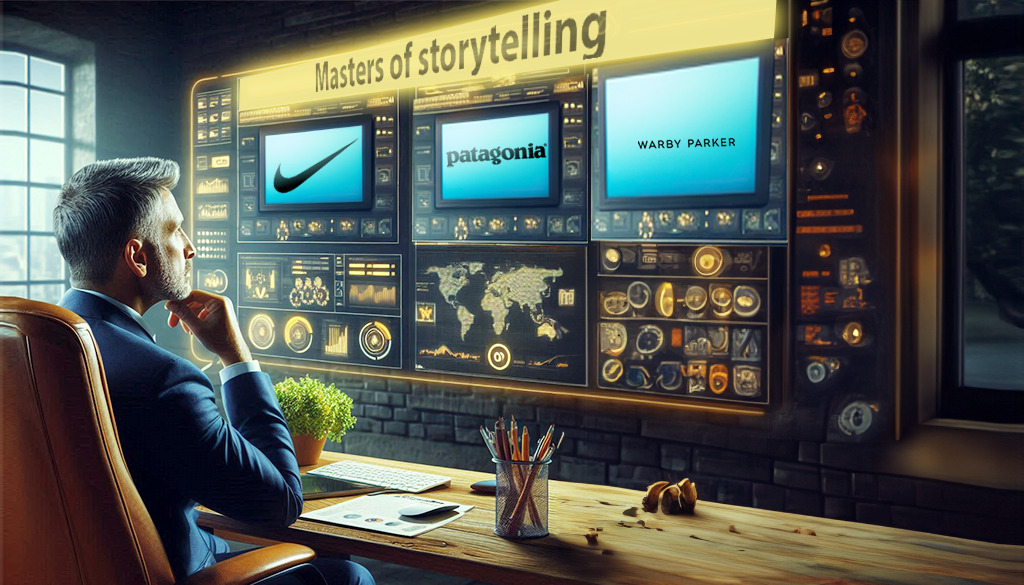Features, Facts, Flop?
Why your brand needs a story, along with a spec sheet.
In the relentless digital churn, attention is the ultimate currency, and industry leaders are locked in a fierce battle to capture it. Dry product specs and feature lists are relics of a bygone era. Today's consumers crave connection, authenticity, and experiences that transcend the transactional. Strategic storytelling is the secret weapon you've been searching for. It's not just about crafting a feel-good narrative; it's about weaving a brand story that resonates with your audience on a deeper emotional level. This emotional connection is the bridge to building brand loyalty – the holy grail of any successful marketing strategy.
Storytelling: The Antidote to Information Overload

It is ancient news that dry product specs and feature lists could win over customers. Marketeers are aware that factual information, while important, struggles to compete in a world saturated with content. Storytelling cuts through the noise by offering:
- Emotional Resonance: Facts tell, stories feel. By weaving a compelling narrative that taps into human emotions – joy, empathy, inspiration – you forge a deeper connection with your audience. A study found that campaigns with strong emotional appeal outperform those focused solely on rational messaging by up to 26%. This emotional investment fosters a sense of loyalty that goes beyond mere product features.
- Salesforce's "Customer Success Stories" series: These short videos feature real customers overcoming challenges with Salesforce's CRM platform. The stories tap into emotions like frustration (with previous solutions) and joy (after implementing Salesforce).
- Salesforce's "Customer Success Stories" series: These short videos feature real customers overcoming challenges with Salesforce's CRM platform. The stories tap into emotions like frustration (with previous solutions) and joy (after implementing Salesforce).
- Brand Humanization: People connect with people, not faceless corporations. Stories allow you to showcase the human side of your brand. Feature real employees facing relatable challenges, illustrate your brand's origin story, or highlight your commitment to a cause. Social media posts from employees are trusted 8 times more than content shared by brands themselves. This vulnerability builds trust and creates a sense of community around your shared values.
- General Electric's "Imagination at Work" campaign: This campaign used video stories to showcase GE's employees and their innovative work on projects like wind turbines and medical imaging technology. It personalizes the brand and connects with viewers on a human level.
- General Electric's "Imagination at Work" campaign: This campaign used video stories to showcase GE's employees and their innovative work on projects like wind turbines and medical imaging technology. It personalizes the brand and connects with viewers on a human level.
- Memorable Impact: Mentioning only statistics and features lists alone is forgettable. Stories, on the other hand, are 22 times more likely to stick with the target audience. A well-crafted narrative with a relatable hero and a compelling arc leaves a lasting impression that goes far beyond technical specifications. Your audience remembers the story, and by extension, your brand.
- Spotify's Wrapped for Advertisers: This B2B spin-off of Spotify's popular user campaign allowed businesses to see data about their brand mentions on the platform. The creative twist on a familiar concept made it a memorable and effective marketing tool.
- Spotify's Wrapped for Advertisers: This B2B spin-off of Spotify's popular user campaign allowed businesses to see data about their brand mentions on the platform. The creative twist on a familiar concept made it a memorable and effective marketing tool.
Crafting Compelling Brand Narratives: A Toolkit

Strategic storytelling isn't just about crafting a feel-good narrative; it's about embedding your brand story into the very fabric of your digital marketing strategy. Here's how decision makers can leverage the power of storytelling via the initiatives of their marketing agency:
- Identify Your Brand Story: Every brand has a genesis. Was it born out of personal frustration, a desire to fill a market gap, or a passion to make a difference? Highlighting your vision via an origin story fosters a sense of connection with your audience. Sharing the hurdles your brand has overcome by embracing your values, showcases resilience and authenticity. It also demonstrates your commitment to continuous improvement, a testament to the relevance of your brand ethos.
- Know Your Audience: Take sufficient time to understand your audience. What are their aspirations and goals? How does your brand help them achieve those desires? Speak the language your audience understands. Take to them, engage with them, take an in-depth analysis of their true wants. Is your tone playful and humorous, or sophisticated and authoritative? Use their most searched keywords in your content to generate brand awareness.
- Embrace Multiple Formats: Short, engaging videos can capture attention and evoke strong emotions. Consider customer testimonials, product demonstrations with a narrative twist, or even animated stories. Spark conversation and engagement with bite-sized brand stories on social media. Use humor, inspirational quotes, or behind-the-scenes glimpses to keep your audience hooked. Leverage different channels to reach out to your audience but cater to each one of them with a different tone. What might generate engagement on Instagram, will not capture views on LinkedIn.
- Focus on Emotion: Elicit emotions through your storytelling. Make your audience laugh, cry, or feel empowered. Emotional connections translate into stronger brand loyalty. Showcase how your brand lives, breathes its core values throughout your narrative, and how it solves real problems for real consumers.
Integrating Storytelling Across Digital Channels

Strategic storytelling isn't effective in a silo. The key lies in harmonizing a cohesive brand narrative across all your digital touchpoints. Here's a deeper dive on how to achieve this seamless integration:
Social Media: The Stage for Bite-Sized Storytelling:
- Leverage the strengths of each social media platform - captivating visuals and engaging captions on Instagram, short and impactful brand stories, conversations on Twitter, thought-provoking questions and industry insights on LinkedIn.
- Encourage user-generated content (UGC) by incorporating storytelling prompts that align with your brand narrative. UGC fosters authenticity and increases audience engagement.
Website: The Home of Your Brand Story:
- Your website should be the central hub for your brand story. Clearly articulate your mission statement and showcase how it drives your brand's actions.
- Don't settle for dry product descriptions. Craft blog posts that weave your brand narrative into the content. Explore industry trends through the lens of your mission, share employee journeys that showcase your company culture, or highlight product features through compelling storytelling techniques.
- Optimize your content so it increases visibility in your target audience. Use specific keywords, trending issues and conversations to generate higher footfall on your website.
Email Marketing: Building Relationships Through Narrative:
- Go beyond generic marketing blasts. Personalize your email campaigns by incorporating storytelling elements that resonate with specific customers, for example, an email beginning with ‘Hey there’ will not create as much callback as ‘Hey (Customer Name)’. Tailoring each email as per the reader’s behavior is the best way to establish a sense of loyalty in them. Share relevant success stories, offer solutions to customer challenges through narratives, or showcase the impact your brand is making with tailored stories.
- For existing customers, leverage storytelling to foster loyalty. Share behind-the-scenes glimpses of your company culture or showcase exclusive customer stories to build a sense of community. Some other relevant B2B loyalty programs include –
- Product announcements and onboarding
- Engagement and promotion
- Recognition and appreciation
- Reward redemption and nurturing
Learning from the Masters: Storytelling Success Stories

Several brands have mastered the art of digital storytelling. Let’s have a look at them and drive inspiration:
- Nike (Global): Nike goes beyond selling athletic wear. Their stories celebrate athletes of all levels, from weekend warriors to Olympic champions. They capture the spirit of perseverance, competition, and the transformative power of sport, building a global community around their brand.
- Patagonia (US): This outdoor apparel company is a champion of environmental activism. Their storytelling seamlessly integrates their commitment to sustainability into every aspect of their brand narrative. Patagonia resonates with customers who share their values, fostering loyalty and advocacy.
- Warby Parker (US): This online eyewear retailer injects humor and wit into their storytelling. Their playful social media presence and quirky ad campaigns showcase their commitment to making high-quality glasses accessible and affordable, building a loyal following among millennials.
The Final Chapter
By strategically weaving storytelling into your digital marketing efforts, you can forge deeper connections with your audience and cultivate brand loyalty in the digital age. Remember, storytelling is a continuous journey. Adapt your narratives, experiment with formats, and always strive for authenticity. As your brand story evolves, so too will your loyal customer base!







